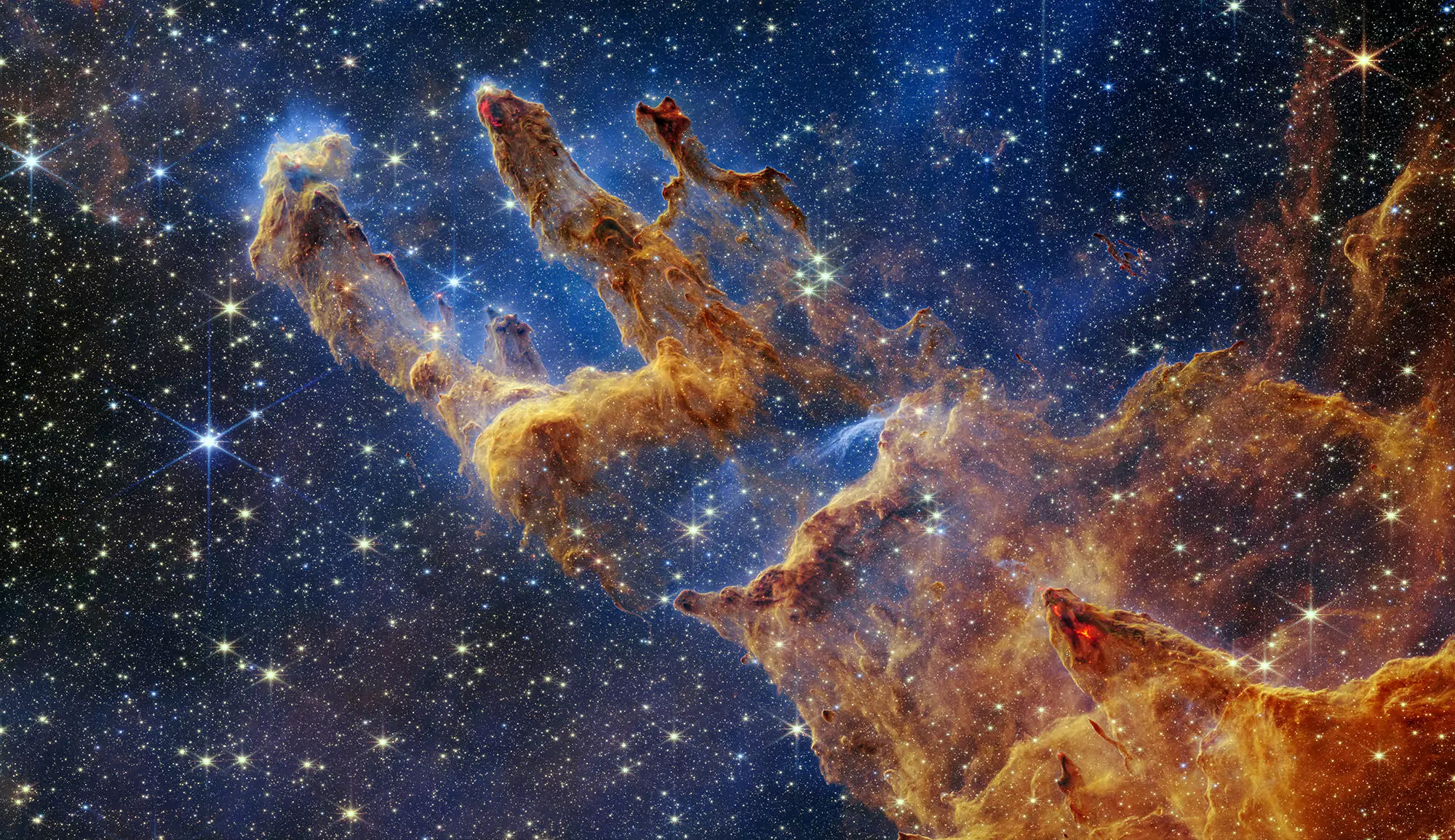
The careful analysis of the large separation has first shown that the red giants showing solar-like oscillations (about a thousand) present in fact very similar solar spectra. The differences are in fact only fortuitous; they result from the stochastic excitation of the modes. A dedicated tool has been set up for correcting these differences. We then obtain a much less noisy information. With the correction, all red-giant show very similar oscillation patterns (Fig. 2). This shows clearly the structure homology of giants, contrary to dwarf stars which still burn hydrogen in their core.

This result has important consequences. First, the identification of the universal pattern (really universal, since all red giants showing solar-like oscillation present the same oscillation pattern), the mode identification is obvious. The identification of the mode degrees allows us to benefit from the most precise asteroseismic information. Furthermore, we have then access to the tiny frequency differences that characterize each individual oscillation spectrum, and we can derive from this signature the stellar interior structure. Note 1: The large separation frequency varies as the square root of the stellar density. Red giants being typically 1000 times less dense than the Sun, their large separation is about 30 times smaller. Values measured with CoRoT are in the range [0.6, 10 microHz], depending on the stellar radius. Giant with a large radius are less dense and present lower oscillation frequency. Note 2: The CoRoT space mission (for Convection, Rotation and planetary Transits) was launched on 2006 December 27. It was developed and is operated by the (CNES), with participation of the Science Programs of ESA, ESAs RSSD, Austria, Belgium, Brazil, Germany and Spain. CoRoT has a 27-cm telescope, with a 4-CCD detector.
Reference The universal red-giant oscillation pattern; an automated determination with CoRoT data B. Mosser, K. Belkacem, M.J. Goupil, E. Michel, Y. Elsworth, C. Barban, T. Kallinger, S. Hekker, J. DeRidder, R. Samadi, F. Baudin, F.J.G. Pinheiro, M. Auvergne, A. Baglin, C. Catala, 2010, Accepted in A&A Letters Contact Benoît Mosser (Observatoire de Paris, LESIA et CNRS)
